Gunnery Tool Hits the Mark
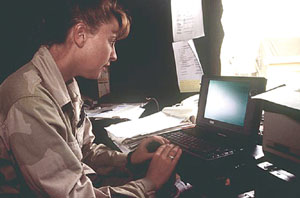 |
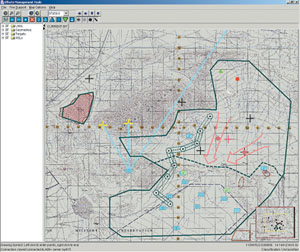 |
| The Advanced Field Artillery Tactical Data System (AFATDS) is a software-based fire control and battlefield management system designed to improve commanders’ situational awareness and increase fire support reaction times. AFATDS is used by all of the U.S. services and by German, Italian, French and U.K. forces. |
Constant evolution keeps artillery-control program plugged into new capabilities.
Feedback from ongoing U.S. military operations in Southwest Asia is enhancing a key fire control and battle management system. Designed to help track friendly units and direct available artillery and air platforms against enemy forces, this software-based application is an important command and control asset and a major component for upcoming programs such as the U.S. Army’s Future Combat Systems (FCS).
The Advanced Field Artillery Tactical Data System (AFATDS) is an automated command and control, fire support and battle management tool that coordinates land, air and sea-based indirect fire systems to support maneuver operations, explains Lt. Col. James Chapman, USA, AFATDS program manager, Fort Monmouth, New Jersey. It allows commanders to plan, coordinate, control and execute requests for fire from a variety of weapons platforms ranging from mortar tubes to naval gunfire and air strikes.
The software-based system resides in a dedicated server and operates across all Army echelons from platoon to corps level. AFATDS also is used by the other services and interoperates with applications such the U.S. Air Force’s Theater Battle Management Core System, the U.S. Navy’s Global Command and Control System–Maritime and Naval Fires Control System, and other fire support and command and control systems across the Army and the U.S. Marine Corps.
AFATDS originated as a development program in the early 1980s, but it did not become a system of record until 1996, when it was first fielded with the 1st Cavalry Division, Fort Hood, Texas, notes Stephen M. Lutz, program manager for effects, Raytheon Network Centric Systems, Fort Wayne, Indiana. Raytheon developed AFATDS, and, he observes, the latest iteration of the software, version 6.4, represents years of ongoing development. “AFATDS is a rules-based expert system that provides commanders with an automated way to manage the battlespace, offering situational awareness, target analysis and automated recommendations for target engagement,” he says.
Recent experiences from combat operations in Afghanistan and Iraq led to the rapid development of new capabilities for the system. AFATDS was used for fire support and battle management by U.S. and coalition forces during operation Iraqi Freedom. Warfighter feedback based on these recent experiences was then compiled into 107 comments or recommendations. Fifteen of these comments were addressed in service packages for version 6.3.1.0 of the software, which was fielded to forces in Iraq prior to July 2003. Additional comments are addressed in service packs for subsequent and upcoming versions of AFATDS. Improvements that have or will be incorporated into the system include the ability to plug into high frequency radio and satellite communications links, remote client links, improved battlefield graphics, an enhanced human interface and links to Blue Force Tracking systems.
The service packs represent a change in operational concepts, explains Steven Bohan, AFATDS program manager, Raytheon Network Centric Systems, Fort Wayne. They are software upgrades and new features that have been rapidly developed to meet user needs. The goal is to distribute the most requested changes quickly to forces in the field. “We are talking about weeks, instead of months, to get them into the field. During OIF [operation Iraqi Freedom], we released a couple of service packs prior to the end of major combat operations in response to requests from the field,” he says.
Bohan is quick to note that these changes do not reflect deficiencies in the AFATDS software but are in response to requests for additional capabilities. The upgrades are sent to units in a compact disc and can be loaded by soldiers in the field. For example, troops in the field wanted to transmit AFATDS data across PRC- 150 high frequency radio networks. A service pack was created and shipped to Iraq within two weeks, he says.
An important aspect of this rapid turnaround capability was input from 26 Raytheon personnel deployed with military units during the operation. Using satellite telephones and e-mail, they relayed this information back to the program manager’s office. Six employees remain in Iraq for these support purposes, Lutz shares.
Col. Chapman adds that a major driver behind the service packs was the need to be responsive to the force. “I knew that we had the capability to rapidly introduce improvements into the software and to leverage the forward presence that the program had with this system, specifically the field support representatives,” he says.
The latest service pack provides commanders with a more comprehensive view of the battlefield such as data feeds from Blue Force Tracking devices that allow more rapid safety checks to prevent fratricide. More improvements will be included in version 6.4 of the software. These upgrades include additional automated fratricide avoidance processes and an improved interface to the Army’s Common Ground Station. The interface will permit AFATDS users to access automated joint surveillance target attack radar system moving target indicator data and unmanned aerial vehicle feeds. “It facilitates our ability to extend our fires to depth as we’re leveraging sensor data and then focusing our engagement efforts on high-value and high-payoff targets,” the colonel says.
Ease of use and interoperability are the key goals of the government/industry team managing the program. As the system’s designer and prime contractor, Raytheon formed tiger teams of engineers to work with users. “These tiger teams have caused us to completely change the interface in many areas,” Bohan explains.
Based on user feedback, Raytheon and the Army migrated to a more intuitive Windows-based interface. Users can access data through commonly used applications such as pull-down menus, pop-ups and icons. The new interface is Java-based, which permits rapid changes and the introduction of new features—something that could not be done under the system’s old architecture, he says.
Because of its fire support and battle management roles, AFATDS interfaces with a number of joint service systems. Col. Chapman notes that how the system is used changes at higher echelons. Platoon and artillery batteries use AFATDS to coordinate and direct fire support, but at the battalion level and above it is used primarily as a battle management tool for situational awareness, he explains. This capability is important for decision makers because it provides the locations of all known friendly and enemy forces. The software also lists available platforms that can attack specific enemy units, highlighting areas where the use of certain weapons is restricted.
The latest version of AFATDS includes enhanced Blue Force Tracking capabilities and the ability to feed this data to a client device such as a personal computer. Bohan notes that the client allows commanders and users to access AFATDS and blue force data easily. The next software release will feed data from the Force XXI Battle Command Brigade and Below (FBCB2) system directly into the AFATDS architecture. A publish and subscribe feature allows users to publish fire support information across the tactical internet as well as to pull situational awareness information data from a variety of sensors.
An important new feature will be the ability to track friendly and enemy units. Bohan concedes that AFATDS always has been able to track enemy units, but its blue force tracking was limited. In the past, friendly units had to have information or systems that directly contributed to the fire support grid to be represented. This is no longer necessary because the new software automatically provides friendly unit locations and identifies them as well as the direction they are moving.
Because AFATDS is a fire support system, it pulls its situational data from fire support coordinators and forward observers; however, the updated version provides a more detailed picture of the battlefield, Col. Chapman explains. “We had a comprehensive picture of the battlefield just through fire support units. Now, we can begin to display maneuver units in conjunction with fire support to build a more comprehensive picture,” he says.
Version 6.4 of the software includes an interface that serves as a tactical exploitation system and links to the Army’s Common Ground Station. This console is a precursor to the Distributed Common Ground System, which will allow fire support platforms to engage enemy units beyond line of sight, the colonel says.
The user interface is the same for any service application of the software, Lutz notes. An operator looks at a computer screen with an artillery solution map on it. By clicking the menu bar, users can select a variety of available weapons platforms. Depending on the service and the exact application, these weapons can range from mortars and rocket-based artillery for Army and Marine Corps users to air strikes, naval gunfire and cruise missiles for Air Force and Navy operators, Lutz explains.
Because of its importance to the services as well as its flexibility, AFATDS plays a key role in future network-centric warfare systems. Col. Chapman notes that the program will migrate to the Army’s Joint Battle Management Command and Control System road map. This effort has seven priorities, and AFATDS fits into four of them, the colonel says. These applications include joint time-sensitive targeting, joint close air support, joint integrated fires and automated target weapon pairing.
In the future, the colonel sees the AFATDS architecture offering users remote access to platforms anywhere in the world via the Global Information Grid. For example, a commander in the Pentagon could securely access AFATDS systems in Korea or Southwest Asia and drill down to Afghanistan or Iraq to locate a specific service node and unit.
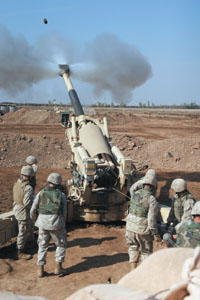 |
| AFATDS is constantly evolving by interfacing with other battlefield tools. Although the system already can guide artillery fire from platforms such as this U.S. Marine Corps howitzer in Iraq with great accuracy, future applications such as precision fire via global-positioning-system-guided artillery shells will greatly enhance its effectiveness. |
But the AFATDS is in a state of continuous evolution. Bohan explains that a long-term goal is to link the software to other applications and tools within a single overarching network-centric architecture to create virtual applications “where the guy running FBCB2 can say, ‘What’s a weapons solution I can get for engaging this target? Is engaging this target safe? Are there any fratricide problems? Is there any no-strike problem?’”
Bohan adds that near-term applications will include the service architecture and public services for weapons and fratricide avoidance that can be accessed via other command and control systems. Other changes include additional integration with the other services for joint operations.
Precision engagement is another major change for AFATDS and other systems. This capability is now available through global positioning system (GPS) guided bombs and missiles. However, a new generation of GPS-guided munitions, such as the Excalibur artillery system, will soon enter service. Bohan explains that management and conflict avoidance will be major issues for coordinating precision engagement systems.
The human interface also continues to evolve for AFATDS. One goal is to move the software entirely to Java to increase portability. This also will allow some of the program’s windows to appear on clients that are not part of AFATDS, Bohan says. Broadly distributing these functions will serve to disperse workloads and increase the number of people involved in the command and control process, he explains.
Web Resources
Raytheon: www.raytheon.com/products/afatds
U.S. Marine Corps: www.marcorsyscom.usmc.mil/sites/pmgc2/afatds.asp
Global Security.Org: www.globalsecurity.org/military/systems/ground/afatds.htm


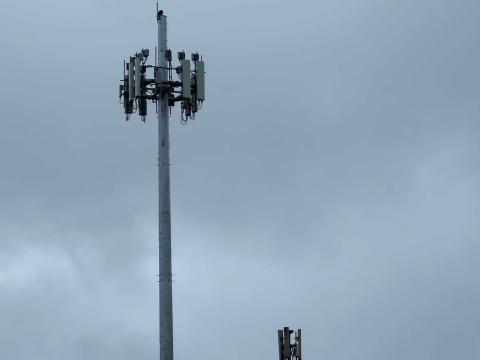
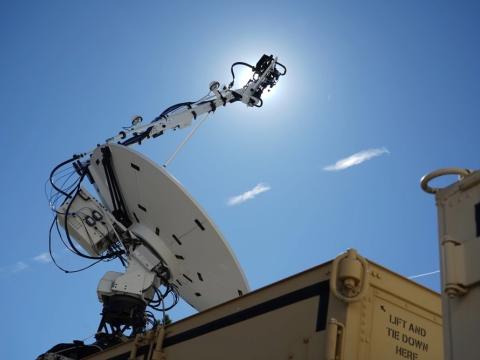
Comments